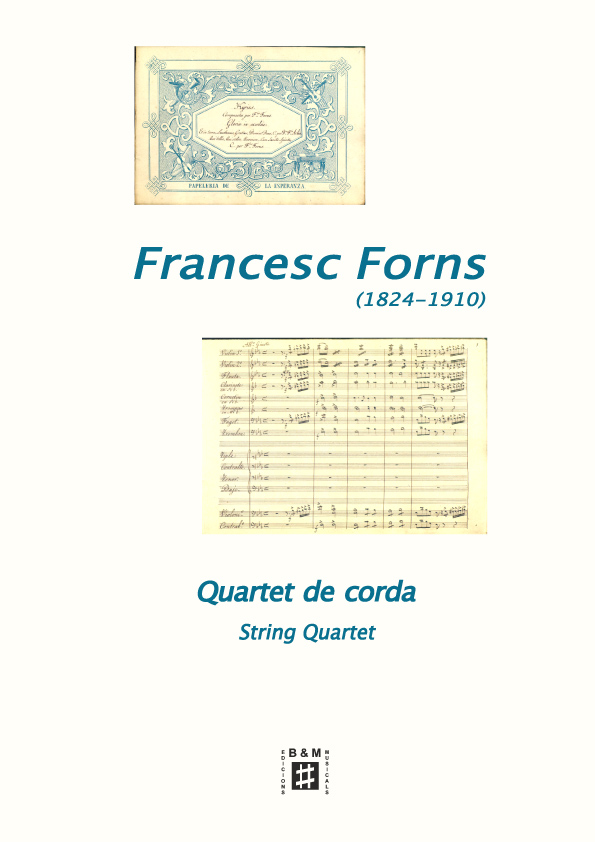Description
Author
Format
Instrumentation
Duration
Pages
Year of composition
ISMN
Ref.
The work we are presenting stands out within his catalogue, being a chamber piece with notable influences from late Viennese classicism.
This string quartet consists of four movements, with some passages featuring highly demanding parts for the first violin.
The first movement, Allegro Giusto, is composed in B-flat major and begins with a brief introduction. Here, a rhythmic motif is passed between the instruments, leading at bar 8 to the first virtuosic section for the first violin. From bar 44, the other instruments occasionally mimic the violin’s motif, though they mainly provide accompaniment. The cello and viola respond with sustained notes embellished by characteristic ornamentation. At bar 85, the main theme returns, now in a minor key. In the closing bars, the cello gains prominence, a role it had only briefly achieved earlier.
The second movement, Andante, written in F major, introduces a simple theme that is repeated, starting from bar 8, an octave higher. This is followed by a section in D minor, featuring frequent chromaticism in the first violin. At bar 42, a diminished chord in first inversion, played fortissimo, leads into the key of A major.
The third movement, Minuetto and Trio, in D major, includes a brief imitation between the violins and viola. A section featuring a four-note ostinato then introduces the Trio. From bar 56 onward, there emerges a particularly beautiful section reminiscent of Beethoven or Schubert. In contrast, bars 116–120 showcase daring dissonances that diverge from the underlying harmony.
The final movement, Rondo, opens with a fragment in G minor, transitioning at bar 67 into a brighter section in D-flat major. This is followed by the reexposition of the main motif in B-flat minor at bar 136, with the Rondo concluding in the home key of B-flat major.
Francesc Forns Sabater (Barcelona, 1824 – 1910) was a violinist in the orchestra of the Gran Teatre del Liceu and in the music chapel of Barcelona’s Cathedral. Several sources mention him as the first violinist at the Liceu and chapel master at the cathedral, suggesting his talent as both a violinist and composer, though this cannot be definitively confirmed.
What we do know is that he taught music theory at the Liceu conservatory, and that his choral work “Las huestes de Pelayo” won first prize in a competition promoted by Clavé in 1863. Unfortunately, this piece has not been found among his works archived in the Biblioteca de Catalunya, where most of his compositions are housed.
His body of work includes religious compositions, particularly masses with orchestral accompaniment, as well as mass fragments and other pieces set to religious texts. His collection also features two single-movement symphonies with Wagnerian influences and an overture in the same style.
As we can gather from notes on various of his pieces, many of his masses were performed multiple times during his lifetime, often on significant occasions in the city’s ecclesiastical life. For example, his longest Requiem Mass, composed in 1866, was performed at least twice more, most notably in 1901 at the funeral of Bishop Josep Morgades of Barcelona.




















There are no reviews yet.